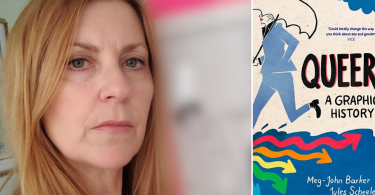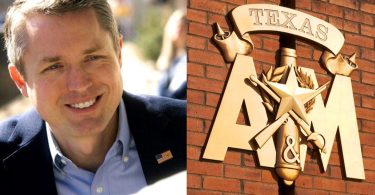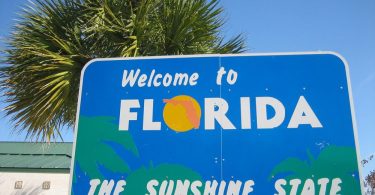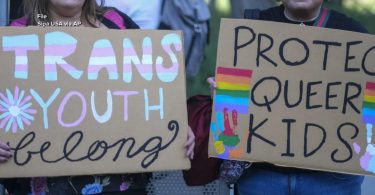The University of Arizona Museum of Art is celebrating 10 years of Mapping Q – an art-based program for LGBTQ youth – with an exhibit featuring works of art created by program participants and teachers over the last decade. The exhibit, “Still Queer After All These Years,” features 35 artworks by 19 artists.
Mapping Q was the brainchild of Chelsea Farrar – now curator of community engagement at the museum – when she was a graduate student at the School of Art. The program, which began in 2014, features an annual free workshop series in which participants ages 13-24 learn art skills and techniques while exploring topics like self-care, community building and harm reduction. Seventy-five young artists have participated.
“The arts provide a space where they are creating community but also using creativity to be able to see themselves and envision a future that they get to write,” Farrar said. “So, they become the authors of their world, and that’s really quite powerful.”
She said the works in this year’s exhibition tell the stories of the struggles and opportunities that come with being an LGBTQ youth and provide a view of a thriving future. They also show solidarity with other marginalized communities, including those who are disabled or neurodivergent.
Creating art and community
Among the artists displaying work at this year’s exhibition is Galen Dara, a graduate student in the School of Art. Her risographs, or digital screen prints, are part of the exhibit that Dara hopes will inspire visitors.
“There will be a wide range of different types of art and expression,” Dara said. “People will get to see how these youths are stepping up in the world through a visual representation of their own art, enthusiasm and bravery.”
Dara will also be leading a Mapping Q workshop on risograph printing in the fall. Students will use the equipment in the School of Art’s Book Art and Letterpress Lab to make multiple prints of their artwork that they can use to exhibit, sell or trade.
“It’s powerful for me in my own development as a human and artist to have my gender and sexual identity be part of the conversations I’m having with myself and with these young artists,” Dara said. “Many of them may be further along than I am in being able to express and be confident with their identities.”
Dara said she is also working on inviting guest lecturers to talk about how youth can “write their own narrative as a queer-identifying person.”
Workshop dates and registration links will be posted on the Mapping Q website as they become available.
What’s next
Farrar said she believes the future is bright for Mapping Q, adding that she hopes to see it grow beyond Southern Arizona.
“I would love to see us go statewide,” Farrar said. “We had really successful virtual workshops during the pandemic, and we were able to work with people who may be living in areas that don’t have a queer youth space. We’d love to do that again.”
Farrar said with continued support from faculty and mentors throughout the university, she is excited to see what will come next from the minds of the next generation of LGBTQ artists.
“I’m sure today’s students will come up with even better ideas than mine, and I’m really excited that our university and the School of Art are great about supporting those creative ideas.”
Plan your visit
This year’s Mapping Q exhibit runs through Jan. 4 in the Our Stories Community Gallery at the University of Arizona Museum of Art. A physical printed catalog featuring the artwork will be released next year. The exhibit and programming are supported in part through by the Community Foundation for Southern Arizona’s Alliance Fund. The museum will hold a pop-up art fair on Oct. 5 from 12-4:30 p.m. where visitors can purchase works from the artists. The museum will be open on a “pay what you wish” basis with all admission proceeds going to support Mapping Q.






